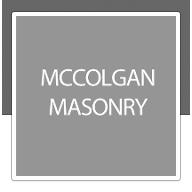Did you know that lightning damage is a fairly common occurrence with chimneys? When lightning strikes a chimney, it often results in broken and scattered bricks and structural damage. These issues need to be fixed as soon as possible to prevent possible damage to your home.
Our modern word “mason” is derived from the Old French, macon, meaning someone who builds with stone or brick. The earliest forms of the word appear to have evolved from mattock (club, hoe), perhaps in part because these early implements were used to shape stone.
If you have cracks in your chimney crown, water can enter through them and gain access to the chimney shell itself. It can even penetrate through to the faulty flashing where the chimney meets the roof and cause quite a bit of damage. This is why prompt crack repair is so important.
The intersection created by your roof and chimney are some of the most vulnerable areas for leaks. We recommend chimney flashing, which seals and protects the joints from water penetration.
One of the most common problems with chimneys is leaks, according to experts. They can form for a variety of reasons – from a chimney crown that is cracked, to cracks in the brick wall to the absence of a crown or chimney cap. A chimney expert can make the necessary repairs.
When you want to put a new fireplace in your home, figuring out how to adequately vent the smoke can be a challenge. Rest assured that we’re always available to install a new chimney in your home so that you can have the fireplace you want.
There are a number of options for homeowners that decide on chimneys. You can choose a traditional wood-burning masonry fireplace and chimney or go for a gas or propane unit or a fireplace that is ventless and can be wall-mounted. Your chimney expert can explain the pros and cons of each.
While there are local code and design restrictions to consider, it is definitely possible to add a chimney to a home built without one, according to the Hearth, Patio and Barbeque Association.
Unfortunately, chimney installation can be a poor DIY project for even homeowners with moderate masonry skills. Remember, the slope of your roof can add an element of danger to the work, making it safest to bring in the professionals for chimney work.
Have you always wished your home had a fireplace in it? Let’s talk about the floor plan for your home and the type of fireplace you have in mind so that we can help you determine whether it’s possible to add a chimney to your home.
A chimney for a furnace isn't going to be built the same as a chimney for a fireplace. That's because they produce different exhaust fumes. These are often built with metal liners that help keep moisture from damaging the chimney.
It took awhile for chimneys to show up, with the first ones in Europe appearing in the 1100s. In fact, the oldest still existing chimney still dates from that time. The chimney is part of Conisbrough Castle in Yorkshire, England, and was built in 1185 AD.
In America, chimney sweeps and pigs are linked together as good luck charms. It was once customary for the town chimney sweep to tote a pig through the streets on New Year's Day.
The ancient Romans are credited with creating the first structured chimneys, which were built to draw smoke out of busy bakeries and large buildings containing heated baths. Private homes lacked chimneys, and relied instead on central hearths that vented smoke through openings in the roof.
Those snowy white top pieces you sometimes see on brick chimneys are called chimney crowns. They're decorative as well as functional caps that keep water from entering the chase on a masonry chimney.
While you may enjoy tackling most projects around your home, installing a chimney can be daunting even for some professionals. Since installing a chimney requires precision masonry work while standing on top of your roof, it’s safest to let professionals handle it.
Are you concerned that your home’s floor plan will make it impossible for you to have the cozy fireplace in the living room you’ve always wanted? Let’s talk about what ventilation and chimney options could make a fireplace a possibility.
Spalling bricks are a sure sign that you are in need of chimney repair. Brick spalling happens when water enters the concrete, brick, or natural stone masonry of your chimney and causes it to push or pop out. Brick peeling or flaking is also a sign of spalling and means your chimney needs professional repair.
Chimneys are subject to the elements and, because of this, are vulnerable to deterioration over time. Rain, snow, and excessive heat can all affect the structural integrity of bricks and mortar. Although most chimneys are designed to last 100 years or more, more porous adobe and antique blends only around 50 years or so.
If your fireplace fills with water every time it rains, that’s a sure sign that there’s a leak somewhere in your chimney. Whether it’s a damper issue or a deteriorated chimney crown, our team is always available to quickly complete the necessary repairs.
Your chimney flue is the chamber that surrounds the chimney itself. The job of the flue is to provide a path for hot gases to vent into the outside air. Regular maintenance of your chimney flue is vital to keeping your chimney in top working order.
A fireplace is an attractive addition to a living room or family room. According to the US Fire Administration, a third of all households across the country rely on fireplaces or fuel-fired appliances as their primary source of heat.


